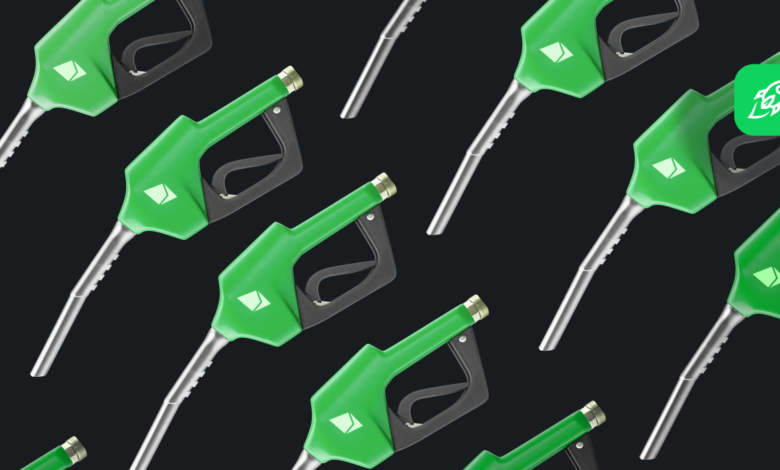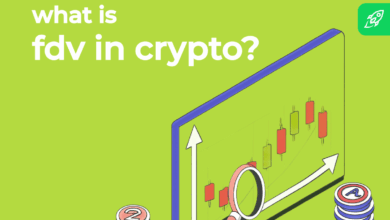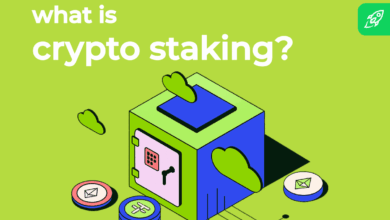Ethereum (ETH) Gas and Transaction Fees Explained

Not enough gas for a transaction! How many gwei is it? The gas limit is too low! Most users outside of the Ethereum ecosystem can’t wrap their heads around this kind of talk. The Ethereum platform is quite peculiar when it comes to transaction fees and operational features. It uses an internal payment method called gas — a fee required to process a transaction or execute a smart contract.
Let’s dive into the mysterious Ethereum world and discover how gas works with Changelly. We’ll talk about the Ethereum virtual machine, gas limits, and gwei sub-units, then discuss miners’ rewards for conducting transactions. We will also take a look at the gas pricing policy.
Why Ethereum Uses Gas
Even though Ethereum has transitioned to a new consensus model with The Merge, gas remains an important part of the network. It helps maintain security, efficiency, and scalability by ensuring that transactions are properly prioritized and processed.
Ethereum uses gas to keep the network running smoothly and efficiently. Gas acts as a resource allocation tool, preventing abuse and ensuring fair use of the network. By requiring users to pay for the computing power their transactions consume, Ethereum can fend off spam and denial-of-service attacks, maintaining overall network security.
Gas also incentivizes miners (or validators in the new model) to process transactions promptly. Since they earn gas fees for including transactions in blocks, they prioritize those with higher fees. This system ensures that the network remains operational even during periods of high activity.
Despite being a fundamental part of the ecosystem, gas prices—and, consequently, gas prices—have a notorious reputation. Many Ethereum rivals focus on making their transactions more affordable to compete. Additionally, many expected that Ethereum’s transition to a new consensus algorithm would reduce gas prices, but steep price tags persist. We will delve deeper into gas prices later in the article.
How Gas in Ethereum Works
Gas is a fee for any transaction in the Ethereum network and, at the same time, the measuring unit of computational effort that is required for particular operations. You’ll need a certain amount of gas in order to create or execute a smart contract, or do anything on the Ethereum platform for that matter.
For those who want to know more about the network, here is a detailed article on Ethereum: What Is Ethereum About?
First, the Ethereum virtual machine (EVM) and the smart contracts that exist on it run on Solidity code. Every line of this code needs a little bit of gas to be executed. Think about your car and actual gas, the fuel: you’ll need a certain amount of gas to get to your destination of choice, and you have to buy this certain amount of gas at the gas station before parting. In a similar fashion, you have to fill up the “gas tank” of your transaction before it starts to be processed.
An Ethereum user must set a gas limit for every transaction. It refers to the maximum amount of gas that can be spent on a particular transaction. Let’s talk about it in more detail.
Ethereum Gas Limit

The gas limit is the maximum amount of gas charged for an instruction (transaction, operation). It helps to avoid overspending—for instance, because of an error in a smart contract or else. Essentially, it prevents you from spending an infinite amount of gas on one operation.
The amount of gas needed for a particular transaction is predetermined by the number of code lines that must be executed. An Ethereum user must set a gas limit that covers the amount of gas spent on the operation. If they fail to do so, the transaction will not be completed because the miners will stop executing it the moment it runs out of gas.
A bit like with your car: the moment there is no more gas in the tank, the car stops, and you can’t proceed to your destination (which is a completed transaction, in our analogy).
If the gas limit has been set too high and there is some gas left after the operation has been executed, it will be immediately returned to the operation generator. If the transaction hasn’t been completed because the gas limit was too low, everything reverts to its original state, while the miner still gets the reward. It means that the operation is as good as non-existent, and the user is forced to start the process from scratch.
A standard gas limit for ETH transfer within the Ethereum ecosystem is 21,000 gas.
Ethereum Gas Prices
The price of Ethereum gas is denoted in gwei, which is worth 0.000000001 ETH. Or, 1 Ether is equal to 1,000,000,000 Gwei.


The cost of one gas may vary depending on how busy the network is. It usually floats around 20 gwei but often increases when the system gets too much traffic. It happens because many transactions compete for the same block at the same time.Several convenient platforms like Etherscan can help calculate the amount of gas you need for a particular transaction and the current price of that gas.
Why Can Gas Fees Be High?
Gas fees on the Ethereum network can sometimes be quite high. Not out of the blue, though: there are several reasons for this. One of the main factors is the overall demand for transactions. When many people are trying to make transactions at the same time, miners have to choose which transactions to process first. They usually prioritize transactions with higher gas fees, which leads to increased competition for block space and drives up the prices.
Gas fees are calculated by multiplying the gas price (the fee per unit of gas) by the amount of gas used by the transaction. So, when there’s a lot of activity on the network, these fees can quickly add up.
Concerns About Ethereum Gas Fees
The increasing Ethereum gas fees have become a significant concern for network users. What was once a relatively low-cost platform for transactions has now become prohibitively expensive for many users, especially those making frequent transactions or interacting with decentralized applications (dApps) on the network. The spike in gas fees since early 2020 can be attributed to the growing popularity and adoption of Ethereum, as it led to increased network congestion and competition for block space.
With the implementation of proof of stake through the Merge and the Beacon Chain, there was hope that gas fees would decrease as the network transitioned away from proof-of-work mining. However, even with this transition, gas fees still remain high at times due to continued network demand and usage. This issue has led to criticisms about Ethereum’s scalability and sustainability as a platform for decentralized applications, prompting developers and users to explore alternative solutions or layer 2 scaling solutions to mitigate high transaction costs on the network.
Strategies to Reduce Gas Costs
Reducing gas costs can make your Ethereum transactions more affordable. Here are some effective strategies:
- Time your transactions: Gas prices fluctuate throughout the day. Try to make transactions during times of lower network activity to save on fees.
- Test before you send: Use tools to simulate your transaction before executing it. This can help you understand the potential gas fees and avoid overpaying.
- Use cost-saving apps: Some applications and wallets are designed to optimize gas usage. Look for those that help minimize your gas expenses.
- Explore other networks: Consider alternative layer 1 networks that offer lower transaction fees. These can provide similar functionality to Ethereum but at a fraction of the cost.
Disclaimer: Please note that the contents of this article are not financial or investing advice. The information provided in this article is the author’s opinion only and should not be considered as offering trading or investing recommendations. We do not make any warranties about the completeness, reliability and accuracy of this information. The cryptocurrency market suffers from high volatility and occasional arbitrary movements. Any investor, trader, or regular crypto users should research multiple viewpoints and be familiar with all local regulations before committing to an investment.





